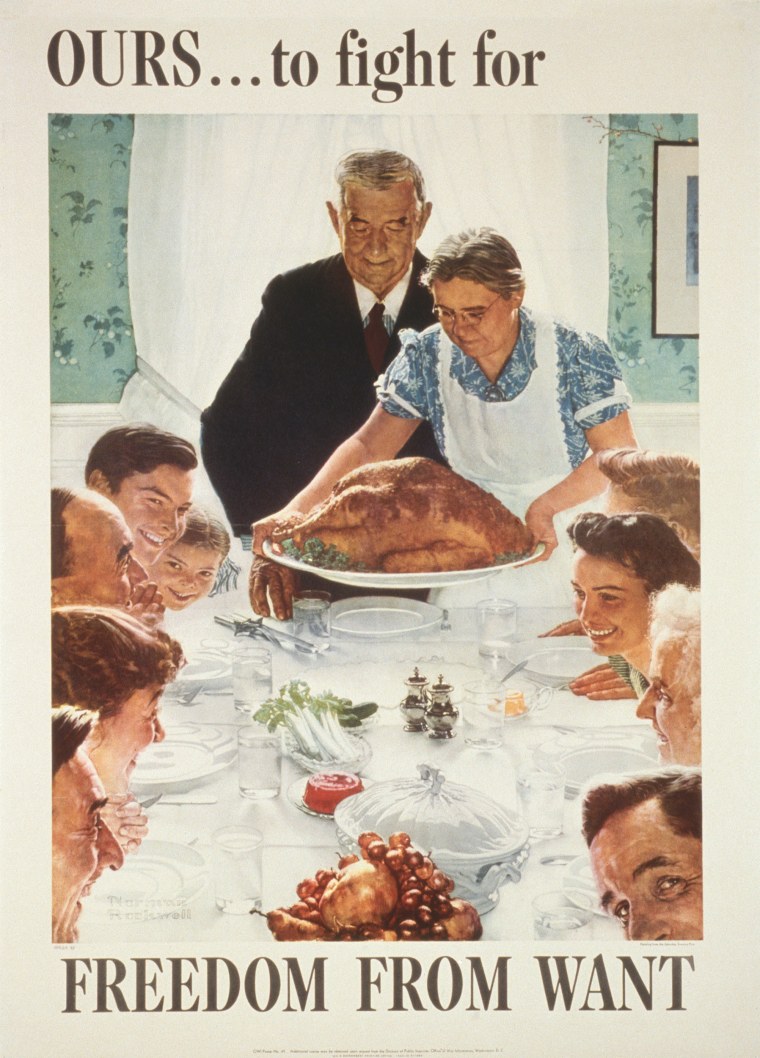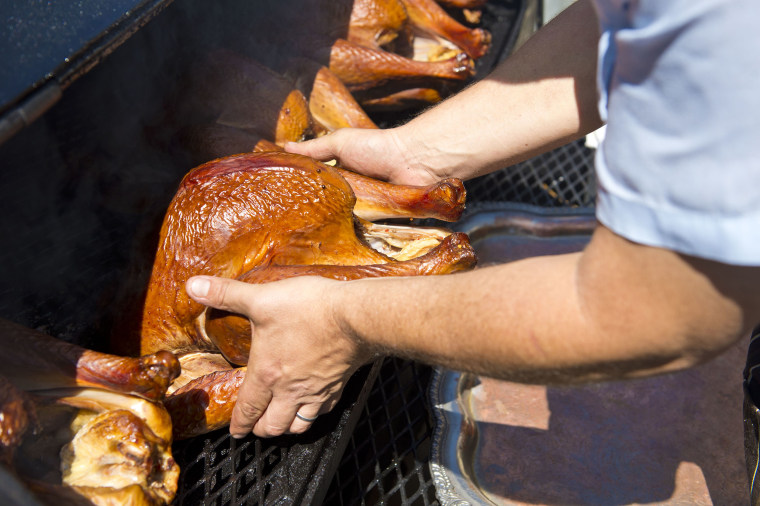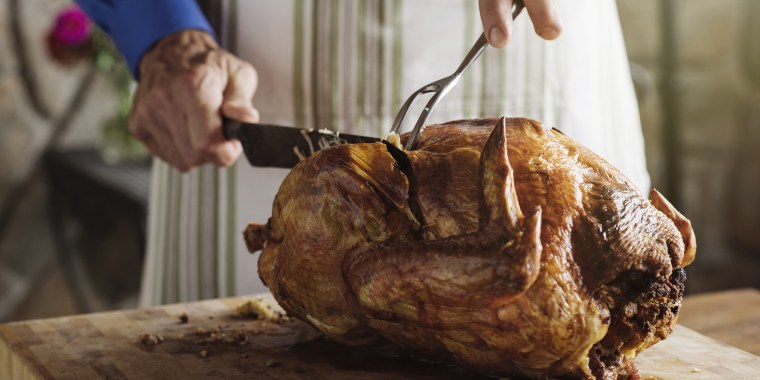Dear Mister Manners: In my family, my mother has always cooked the turkey and my father always carved it. I just can’t imagine it any other way. And yet, I wonder: Is the idea that the patriarch should cut and serve the bird an outdated concept?
(Mealtime with Mister Manners is a column that delves into a smorgasbord of modern-day dining dilemmas. Please submit your etiquette questions at the bottom of this page.)
In the single-most famous Thanksgiving scene of all time, Norman Rockwell’s "Freedom from Want" (1943), an aproned matriarch lays a massive cooked turkey on her family’s dinner table as her husband stands approvingly behind her. The multigenerational assortment of guests remains engrossed in side conversations, oblivious to the arrival of the perfectly basted entrée. But for the man of the house, his vaunted role is imminent and clear: His right hand rests behind a modest set of cutlery, ready to commence his task as soon as the turkey has landed.

Hollywood has reinforced the imagery of patriarch as turkey carver, though often with disastrous results, as seen in the 1989 holiday classic "National Lampoon’s Christmas Vacation" or in the 2010 Ben Stiller comedy "Little Fockers." In the latter film, after parading a perfectly cooked bird from the kitchen, well-meaning everyman Greg Focker breaks out an Irish hunting knife emblazoned with the crest of his wife’s family, offering the honor of carving to his father-in-law. When his sometime nemesis, a retired CIA agent played by Robert DeNiro, graciously demurs, Focker proudly dives into the task himself, with an outcome that predictably goes from bad to chaotic.
Clearly Focker had not boned up on the "The Boke of Keruynge" (The Book of Carving), printed in 1508 by an enterprising European publisher named Wynkn de Worde. This guide, a detailed how-to for men of noble station, offers reams advice for making thorough and effective work of the carving task.
Medieval manners
Indeed, throughout the Middle Ages in Europe, facility with carving was a vital skill, requisite knowhow for any member of the nobility. So prized was the ability to carve a cooked animal that squires could not possibly hope for knighthood without having mastered the techniques of wielding knives. “From the fourteenth century onward — throughout the Renaissance and into the modern era — it was so central,” says Hannele Klemettilä, Ph.D., a Finnish historian and author of "The Medieval Kitchen: A Social History with Recipes."
“For the leading classes — If you think about executioners, butchers, knights and anybody else who was touching dead bodies, meat and blood — rituals and ceremonies were the way to separate a nobleman from these things that could be dangerous and polluting,” explains Klemettilä.
Guys on the grill
By the twentieth century, most of those primal roles were either extinct or pushed beyond public view — with meat shaving and carving stations being a visible holdout. California chef Ben Ford attributes the longevity of the image of the male doing the carving as part of a deliberate trend: “After the Great Depression, which had separated and fragmented families, there was this Ozzie and Harriet phase of putting things back together and creating some sort of stereotypical family unit again,” he explains, citing the commercial introduction of the Weber grill in 1952 as evidence of the introduction of tasks that men could proudly own.

“It seems like men always get put in charge of the meat at gatherings — like at barbecues, they're always the ones on the grill," says butcher and entrepreneur Cara Nicoletti. “Maybe it’s had something to do with deeply ingrained misogyny and a cultural discomfort with women being put in charge?” Even the children’s book "Who Will Carve the Turkey This Thanksgiving?" responds with a litany of whimsical possibilities — none of whom is mom — before (spoiler alert!) settling on grandpa.
The founder of Seemore Meats & Veggies and a fourth-generation butcher, Nicoletti is turning such perceptions on their heads as a woman proudly and deftly approaching the task of carving — regardless of the animal.
Turkey 2.0
In 2022, though the concept of an alpha male being the turkey carver may persist on celluloid, Ford, author of "Taming the Feast," says, in reality, “We've said goodbye to those days.” With the notable prominent exception of the Grand Carver to the British monarchy — a title conferred by birth — the task of carving, at Thanksgiving or otherwise, table is truly up for grabs.
With gender no longer a determinant in who should wield the carving cutlery, my suggested descending pecking order is as follows:
- The one with the sharpest skills
- The one who craves the honors
- The one who did the cooking
And if all else fails? The adult victor of the previous year’s wishbone contest.
Regardless of how your clan cleaves this weighty responsibility, as you give thanks this Thanksgiving, don’t neglect an all-important nod to the individual who ensures everyone will receive their favorite piece of the bird, sliced to perfection, of course.
Submit your dining etiquette questions here:

